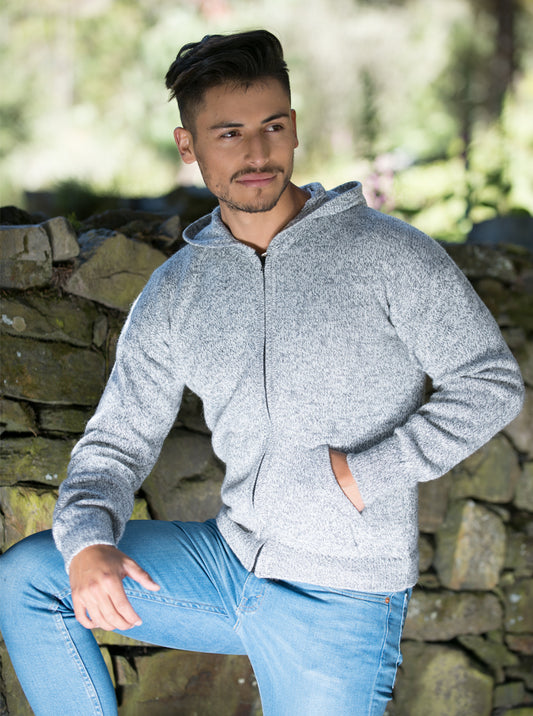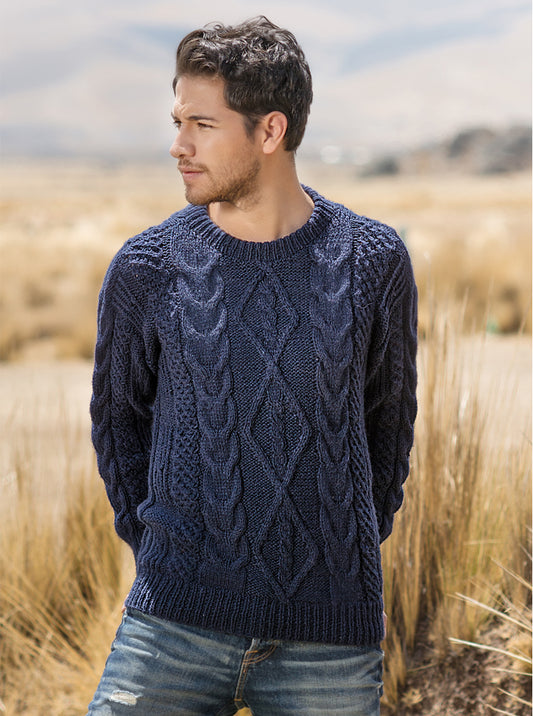Alpaca Fiber: Uses, Propertites and Benefits
Soft, with a natural shine, light, available in many natural colors and very resistant; These are the main features that make the alpaca a unique material for high quality. These qualities have made it a very sought-after fiber worldwide.

Alpaca Fiber: Photo: GamboaFashion.com
Quality
Regarding the diversity of the quality of the alpaca fiber, Freddy Maldonado, a researcher at the NGO Agronomists and Veterinarians Without Borders Bolivia (AVSF) said that the quality of the alpaca fiber depends "60 percent on the environment where the animal lives and 40 percent on genetics.” (Agronomists and Veterinarians Without Borders Bolivia).
The quality of the alpaca fiber is also determined by the food the animal consumes and the way the producers treat the fiber.
If the climate is harsh, the alpaca fiber becomes thin and resistant and it´s considered of higher quality. Robalino Telmo, from the AVSF NGO says that Australian alpacas live in a more favorable climate and feed on grass; this makes their fiber thin but less resistant.
As for the colors of the alpaca fiber it is very difficult to establish exactly how many colors can be found in one fleece since there can be up to 6 different tones and each natural color can have 3 different tones.
Alpaca producers have found a way of developing pure colors by mixing fibers from different alpacas. According to the nomenclature, there are 27 shades of alpaca fiber. This variety of shades allows the garments to have different tones and mixed colors. This also results in a variety of natural colors and a variety of garments.
Shearing
To shear the alpaca, the fiber should be 12 cm long and this why only alpacas over 2 years old are sheared. Also, the minimum length of the fleece that is sheared should be about 7 cm.

Alpaca Fiber and Yarn. Photo: GamboaFashion.com
Features
Among the main properties of the alpaca fiber, we can mention the following:
- It has between 22 and 27 natural colors with different tones and textures, and mixing these colors can produce other colors.
- The alpaca fiber is strong and resistant. It is three times more resistant than sheep wool and seven times hotter. It does not lose this resistance.
- The alpaca fiber contains microscopic air bags that make the garments light and delicate. In addition, they also maintain the heat when it's cold and are not so heavy when it's hot. They act as insulators.
- It has a natural glow that makes the garments made with this fiber look very good even after being dyed.
- Garments made with Alpaca Fiber do not tear, peel, deform or create static energy and can be washed easily by hand.
- The alpacas produce a fine fiber that is soft to the touch and gives a less itching sensation than other fibers. To make soft garments, only the fine fiber is used from the baby alpaca or superfine type.
- Alpaca fiber is hypoallergenic, which makes it excellent for people who are sensitive to some clothes, especially wool.
Source: Agronomists and Veterinarians Without Borders Bolivia (AVSF). Robalino Telmo, Director of AVSF Bolivia, and Freddy Maldonado, researcher at AVSF Bolivia.
Featured Products
-
 Ausverkauft
AusverkauftGraue und Weiße Warme Alpakawolle - Chacaltaya
Normaler Preis R$ 266,00 BRLNormaler PreisGrundpreis / proR$ 384,00 BRLVerkaufspreis R$ 266,00 BRL
 Ausverkauft
Ausverkauft -
 Ausverkauft
AusverkauftHandgemachter Pullover
Normaler Preis Von R$ 266,00 BRLNormaler PreisGrundpreis / proR$ 531,00 BRLVerkaufspreis Von R$ 266,00 BRL
 Ausverkauft
Ausverkauft -
 Ausverkauft
AusverkauftSenf Pullover
Normaler Preis R$ 254,00 BRLNormaler PreisGrundpreis / proR$ 531,00 BRLVerkaufspreis R$ 254,00 BRL
 Ausverkauft
Ausverkauft -
 Ausverkauft
AusverkauftBlauer Alpaka-Pullover für Herren
Normaler Preis R$ 266,00 BRLNormaler PreisGrundpreis / proR$ 502,00 BRLVerkaufspreis R$ 266,00 BRL
 Ausverkauft
Ausverkauft -
 Ausverkauft
AusverkauftGrauer Alpakapullover
Normaler Preis Von R$ 236,00 BRLNormaler PreisGrundpreis / proR$ 531,00 BRLVerkaufspreis Von R$ 236,00 BRL
 Ausverkauft
Ausverkauft





